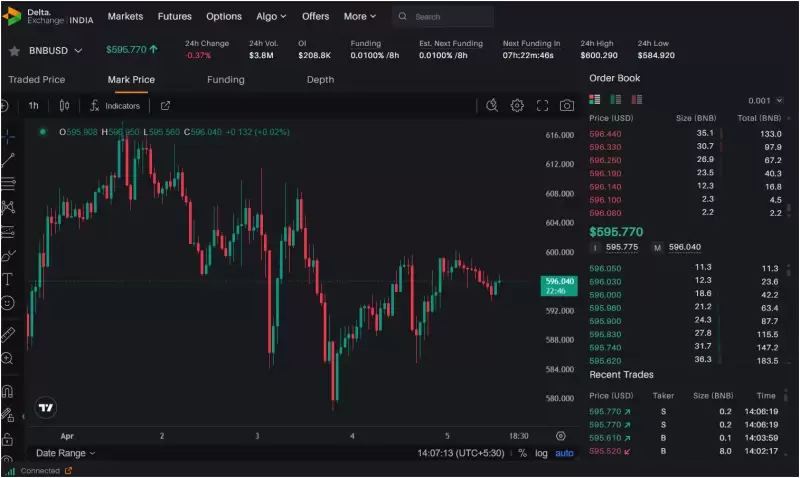 |
|
 |
|
 |
|
 |
|
 |
|
 |
|
 |
|
 |
|
 |
|
 |
|
 |
|
 |
|
 |
|
 |
|
 |
|
TRON (TRX) is a public, open-source blockchain network that relies on a Delegated Proof-of-Stake (DPoS) consensus mechanism.

TRON (TRX) is a public, open-source blockchain network that relies on a Delegated Proof-of-State (DPoS) consensus mechanism and the Practical Byzantine Fault Tolerance (PBFT) consensus algorithm to process transactions and secure the network. An election process is used to determine which validators participate in consensus. All TRX stakers vote onchain for the candidates they want to become Super Representatives (SRs). In each epoch, the top 27 most voted-for candidates become SRs within the active set and take turns producing blocks. A new election occurs every six hours. The TRON Virtual Machine (TVM) powers applications on the network and uses “Energy” and “Bandwidth” instead of gas, like its Ethereum Virtual Machine (EVM) counterpart. Bandwidth is gas spent on transactions, whereas Energy is gas spent on smart contract calls. Energy and Bandwidth can be acquired by staking TRX or burning TRX to pay for the Energy/Bandwidth required to execute a smart contract call or transaction. The TVM is EVM-compatible and offers developers affordable and fast smart contract execution.
TRON is best known for its stablecoin activity and large user base. The network supports multiple stablecoins, including Tether (USDT), TRON’s native USD-pegged stablecoin USDD, and TrueUSD (USDt). Among the major blockchains, TRON has the highest concentration of stablecoins, with 45.9% of all USDT supply being held on TRON at the end of Q1. Despite the high concentration of stablecoins, the total stablecoin market cap on TRON decreased 13% QoQ from $71 billion to $62 billion. This decrease was due to the depreciation of USDDOLD and migration to USDD 2.0, which released previously locked TRX collateral (used to mint USDD) back into circulation.
At the end of Q1, TRX’s circulating market cap increased for the ninth consecutive quarter, up 3.5% QoQ from $21.9 billion to $22.7 billion. Furthermore, TRX performed similarly to other large-cap cryptocurrencies as its market cap ranking dropped one spot from 9 to 10.
Notably, TRX has been a deflationary token for many quarters. However, in Q1 there was a 10% increase in the circulation supply of TRX, making it inflationary for the quarter. This change occurred due to the deprecation of USDDOLD and migration to USDD 2.0, which released previously locked TRX collateral back into circulation.
TRON utilizes a resource model to execute transactions onchain. To summarize, the resource model is based on distributing Bandwidth and Energy to stakers. As long as stakers have acquired enough resources, they can use those resources to transfer tokens and execute smart contracts for free. Users must cover transaction fees with TRX if they utilize more computing power than their resources allow, all of which is burned. As such, revenues for TRON are derived from the TRX token burns coming from transaction fees. To track these numbers in real time, see the TRON Portal.
TRON had another solid quarter for USD revenue. Total Revenue in USD was up 2.7% QoQ from $740.3 million to $760.2 million, and daily revenue was up 14.7% QoQ. Due to the 6.1% decrease in token price in Q1, Total Revenue in TRX was down for the second consecutive quarter by 10.8% from $3.6 billion to $3.2 billion.
The circulating supply of TRX is primarily affected by two parameters: (i) tokens minted to reward stakers and block producers, and (ii) tokens burned due to network transaction fees. TRX rewards equate to 5.06 million tokens being minted per day. As such, the circulating token supply will decrease over time if more than 5.06 million TRX are burned daily, on average.
In Q1, the circulating supply of TRX increased from 86.6 billion to 95.0 billion. This is the first quarter where the circulating supply of TRX increased due to the migration of USDDOLD to USDD 2.0. The increase in TRX’s circulating supply is due to the deprecation of USDDOLD and the migration to USDD 2.0, which released previously locked TRX collateral into circulation. While this change affects circulating supply, it does not increase TRX’s total supply and instead reflects a shift in accounting methodology.
Annualized, this equates to an inflation rate of approximately -1.6%. Annualized inflation was down QoQ, decreasing 40% from -2.6%.
TRON incentivizes participation in its staking mechanism through a combination of the following:
The annualized real yield for staking decreased in Q1, down 14% QoQ from 7.3%
Disclaimer:info@kdj.com
The information provided is not trading advice. kdj.com does not assume any responsibility for any investments made based on the information provided in this article. Cryptocurrencies are highly volatile and it is highly recommended that you invest with caution after thorough research!
If you believe that the content used on this website infringes your copyright, please contact us immediately (info@kdj.com) and we will delete it promptly.
-

-

-

-

-

- Rare Bicentennial Quarter Found: Have You Reached into Your Pocket and Pulled out a Coin That Looks a Little Different?
- Apr 18, 2025 at 08:15 pm
- If so, you might have held a Bicentennial Quarter — a coin that's become the center of some eye-popping headlines. Some stories even claim there's a rare Bicentennial Quarter worth $45 million!
-

-
![By [Author’s Name] | April 18, 2025 | Market & Crypto Insights By [Author’s Name] | April 18, 2025 | Market & Crypto Insights](/assets/pc/images/moren/280_160.png)
-

-





























































